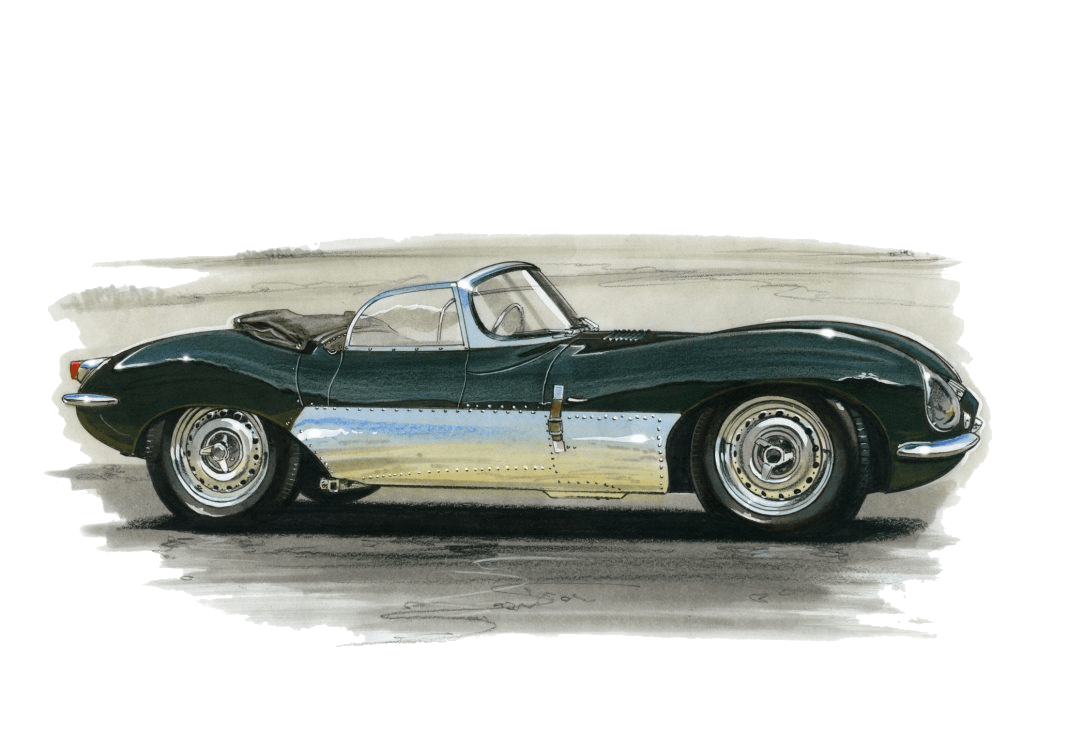
The exhilarating era of post-war automotive design brought forth several classic sports cars that took the world by storm. One such legendary classic is the Jaguar XK SS, a race car that transitioned into the sports car domain with style and high-performance capabilities. This article focuses on a comprehensive comparison of the performance of the Jaguar XK SS with its contemporary sports cars.
The Jaguar XK SS, introduced in 1957, is a road-going adaptation of Jaguar’s successful D-type racer. Its aggressive stance, adorned by swooping lines and a large mouth-like grill area, made it immediately stand out. But beyond the aesthetics, it was the performance of this road beast that made it truly remarkable, head and shoulders above many of its contemporaries.
Equipped with a powerful 3.4-liter straight-six engine that churned out 250 horsepower, the Jaguar XK SS was one of the most powerful cars on the road at the time. The engine paired with a four-speed manual transmission allowed the car to sprint from 0 to 60 mph in just five seconds, faster than many sports cars of its era, including the Chevrolet Corvette (8.1 seconds) and the Ferrari 250 GT (6 seconds).
Similarly, the XK SS’ top speed was an impressive 149 mph, flying past the Aston Martin DB Mark III’s 120 mph and very close to the Mercedes 300SL’s 150 mph, establishing it as a leading force in the sports car world.
Underneath the glorious façade, the Jaguar XK SS was constructed with elements straight from the racetrack. It was built with a riveted aluminum monocoque chassis, a pioneering technology at the time, which made the car exceedingly lightweight and maneuverable. This truly set the XK SS apart from other sports cars of its era, which mostly adhered to the traditional steel body-on-frame design.
Though praised for its straight-line performance, the Jaguar XK SS was just as formidable when it came to handling. The combination of the lightweight chassis, independent rear suspension, and an endurance-tested Dunlop disc braking system provided excellent balance and road-holding ability.
Comparing to others like the Porsche 356 or Ferrari 250 GT, which boasted well-regarded handling, the XK SS held its own and often exceeded these competitors, especially at high speeds. Its rigid monocoque construction reduced body flex, enabling it to handle sharp turns and rough terrains with relative ease, a dream come true for any sports car lover.
The Jaguar XK SS didn’t just ride on the laurels of formidable speed and handling. A distinctive element that tipped other sports cars of its era was the car’s reliability. It had the advantage of being based on the Le Mans-proven D-type, which had already showcased longevity and trustworthiness on some of the toughest race tracks.
In conclusion, the Jaguar XK SS, with its impressive speed, robust handling, and proven reliability, stood as one of the true icons in the golden era of sports cars. Its performance outclassed many of its period contemporaries, making it not just a marvel of its time but a legend that resonates with enthusiasts even today. With every roar of the XK SS, Jaguar marked its presence and superiority within the domain of luxury sports vehicles — a legacy that continues unabated.